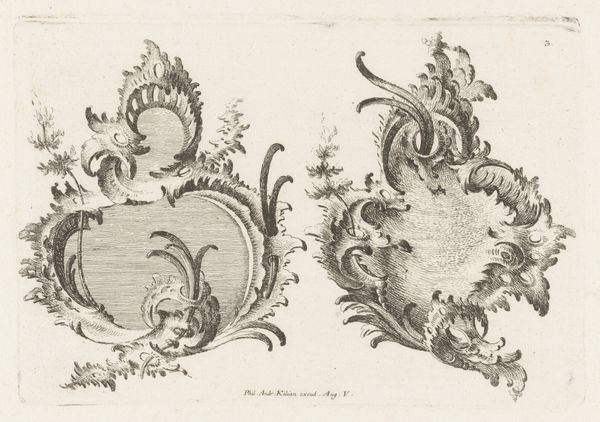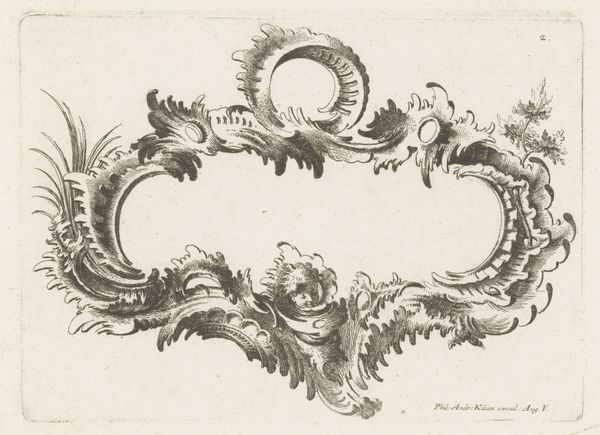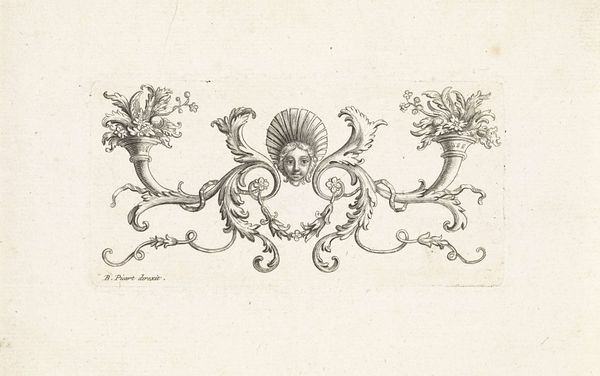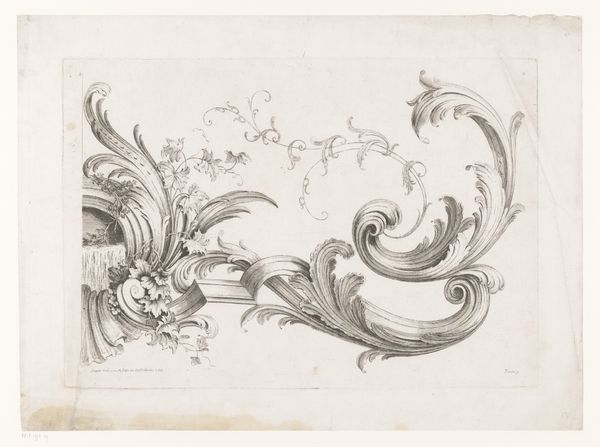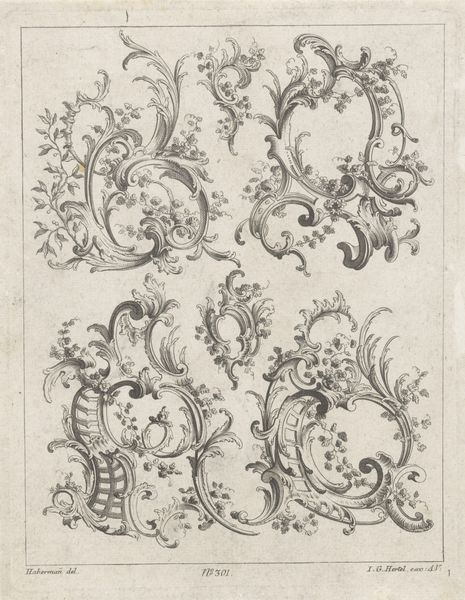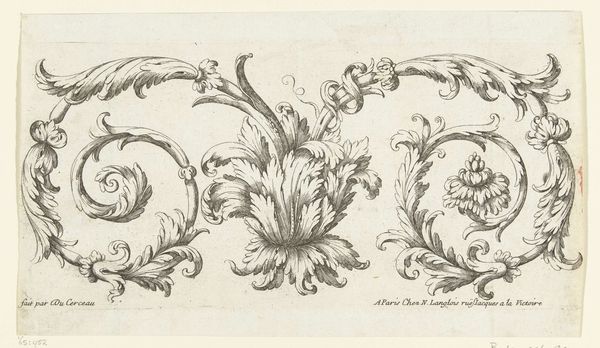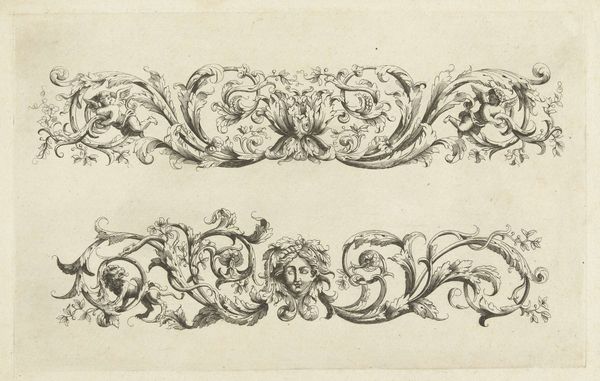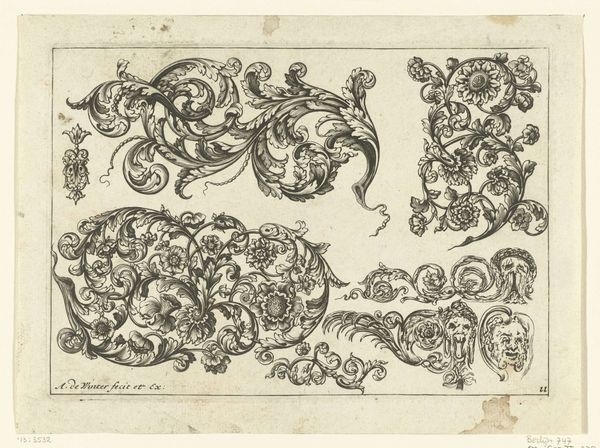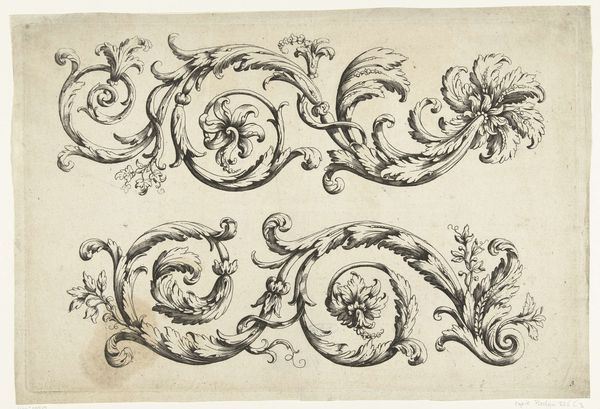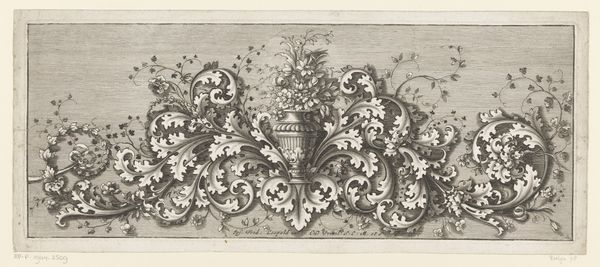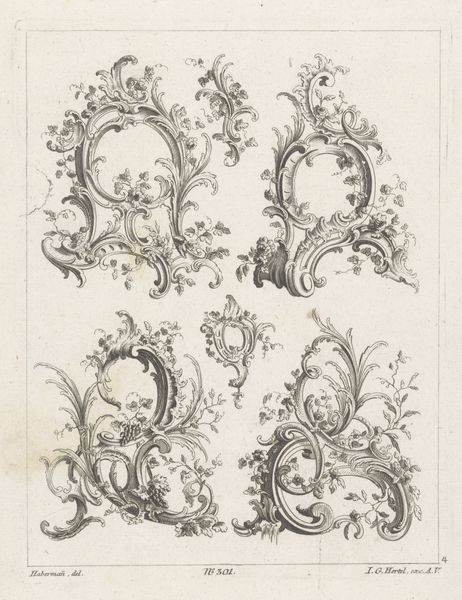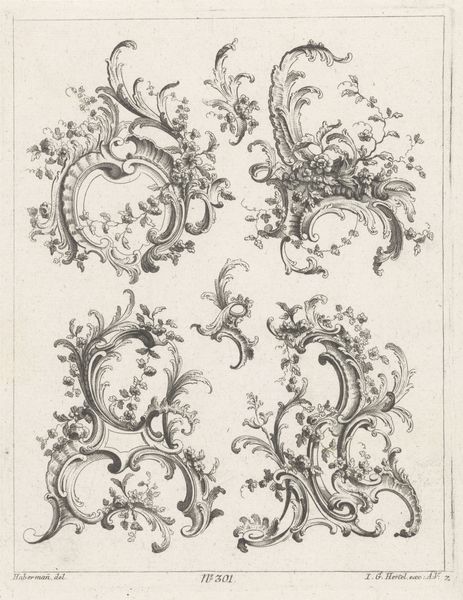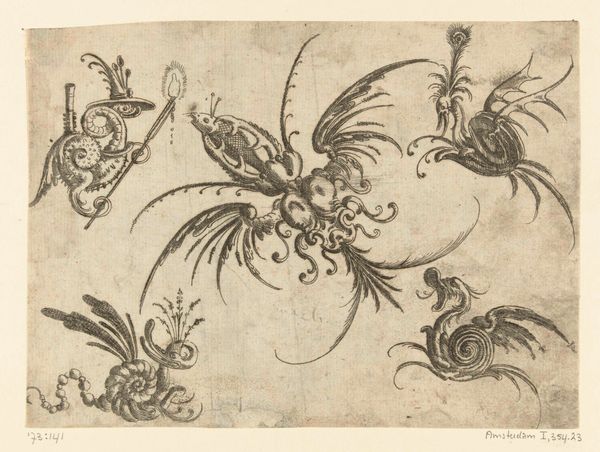
engraving
#
baroque
#
old engraving style
#
form
#
line
#
decorative-art
#
engraving
Dimensions: height 168 mm, width 250 mm
Copyright: Rijks Museum: Open Domain
Curator: Here at the Rijksmuseum, we have "Twee Cartouches" an engraving dating back to between 1747 and 1759, created by Joseph Huber. Editor: It feels so whimsical, even playful. The lightness of the engraving gives it an airy quality, despite the intricate detail. It reminds me of delicate spun sugar. Curator: Huber's handling of line is masterful here. Look at the rococo elements; the asymmetry, the elaborate curves, the sheer density of detail in these cartouches. The lines coalesce to form layered planes with a delicate texture that dances across the surface. Editor: And what do you think these cartouches were for? They speak to me of elaborate invitations, royal announcements, perhaps even declarations of love. The visual language suggests importance and beauty. Curator: Absolutely. In terms of form, we see a clear emphasis on ornamentation typical of the late Baroque period, an almost excessive devotion to the decorative. Note the structure of these two frames with empty centers; they create focal points but only suggest the purpose. The possibility they suggest intrigues me. Editor: Right! Because, really, it is this emptiness within the forms that intrigues me. In cartouches through the centuries, that space held a story, an intention. It could be a coat of arms or a sacred portrait that made people dream and fantasize. Even today, the promise remains. Curator: Indeed. Without that element, these forms lack purpose; it becomes just beautiful formalism. However, with the empty center, these "Twee Cartouches" exist between pure formalism and iconic status. Editor: For me, looking at this artwork is an inspiring reminder of how forms carry collective cultural memories and desires. And while they may seem purely decorative, they invite stories and emotions that reach through time. Curator: Well, seeing it through your eyes, I agree the visual analysis reveals so much about its structural complexity, but ultimately it points back to the symbolic purpose ingrained through centuries of the culture and traditions around us.
Comments
No comments
Be the first to comment and join the conversation on the ultimate creative platform.
